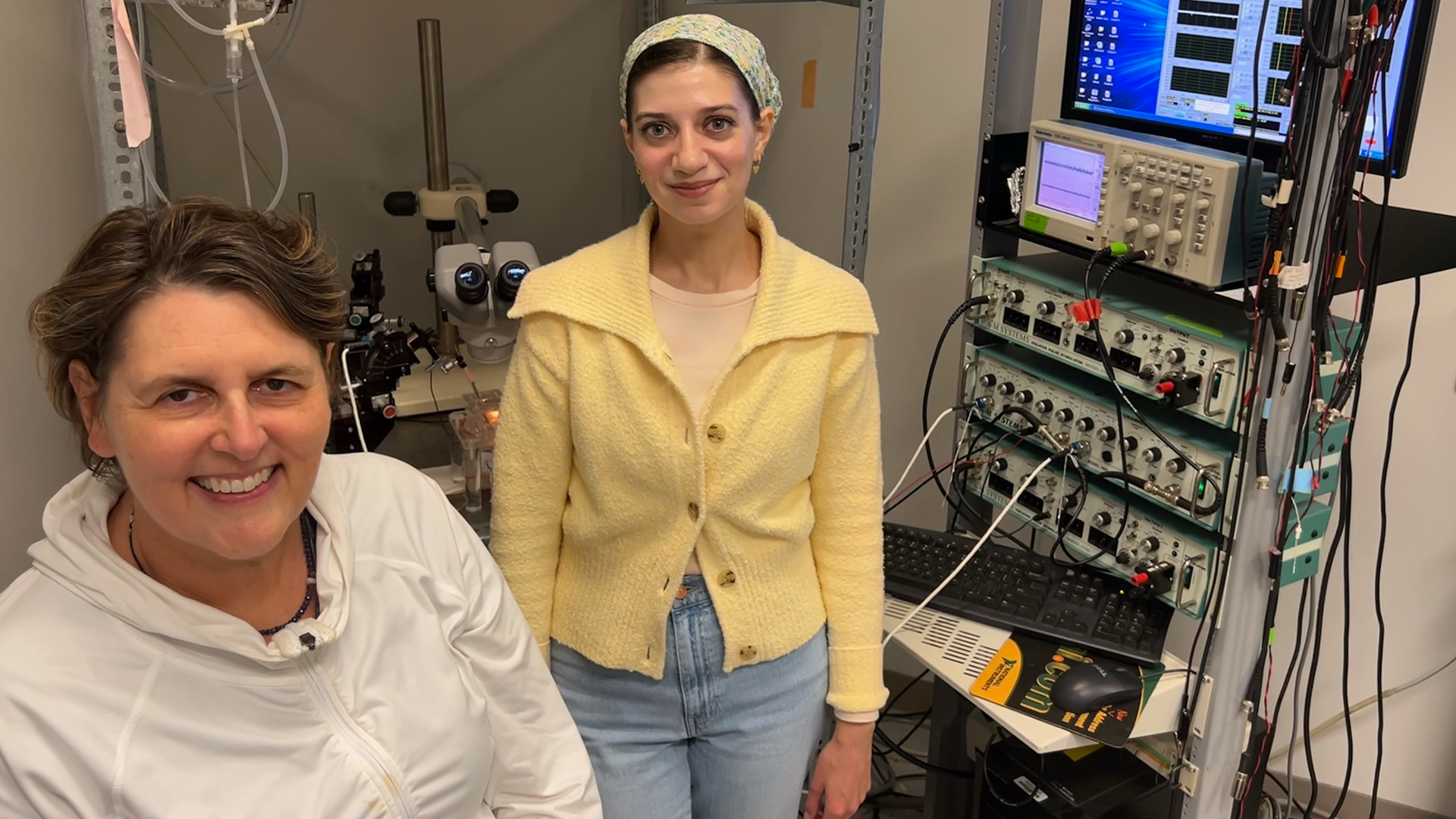Sex Differences and the Role of Estrogen Receptors in Cortical Circuit Dysfunction in Fragile X Syndrome Mouse Models

Kimberly Huber, PhD
Principal Investigator
Nadine Nijem, PhD
FRAXA Postdoctoral Fellow
University of Texas at Southwestern
Houston, TX
2025-2026 Grant Funding: $100,000
Summary
Fragile X syndrome can have very different affects on males and females. Dr. Kimberly Huber and Dr. Nadine Njem believe that estrogen plays a critical role in how FXS presents these differences, particularly when it comes to sensory circuits in the brain.
This study aims to gain a better understanding of sex differences in FXS and to test FDA-approved drugs which target estrogen receptors, to see if these compounds can improve brain function and reduce audiogenic seizures.
The Science
While Fragile X syndrome (FXS) is more common and often more severe in males, females with Fragile X can also experience significant challenges — including sensory sensitivities, anxiety, and seizures. This project aims to understand why Fragile X syndrome affects males and females differently, with a focus on how estrogen receptors in the brain may play a key role.
Most research to date has focused on males, so we know far less about how the disorder impacts females. Dr. Kimberly Huber’s team is working to close this gap. Their earlier studies suggest that a specific estrogen receptor, ERα (estrogen receptor alpha), may be involved in the brain circuit dysfunctions that lead to sensory processing problems and seizures in Fragile X syndrome.
With this new FRAXA award, the team will investigate how ERα affects neuron excitability — and whether blocking this receptor can help normalize brain activity. The goal is to lay the groundwork for sex-specific treatments for Fragile X.
To do this, they’ll compare male and female Fragile X mouse models, using advanced brain imaging and EEG-like recordings to track changes in brain activity. They’re also testing existing approved ERα-blocking drugs, originally developed for hormone-sensitive cancers, to see if these compounds can improve brain function and reduce audiogenic seizures — a key marker of brain hyperexcitability in Fragile X.
Meet the Scientists
Dr. Kimberly Huber is a leading neuroscientist known for her pioneering research on how brain cells communicate in Fragile X syndrome. She began her work on Fragile X as a postdoctoral fellow with Dr. Mark Bear and has since made major contributions to our understanding of synaptic function and plasticity. Based at UT Southwestern, her research focuses on how disrupted signaling pathways affect brain development and behavior in Fragile X.
Dr. Nadine Nijem earned her PhD in Cell and Molecular Biology from the University of Houston in 2023. Her research integrates genomic and epigenomic tools to understand how gene regulation impacts brain function, aiming to uncover new therapeutic targets for conditions like Fragile X syndrome.
